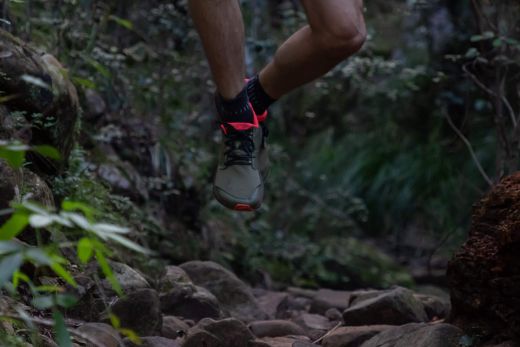With uneven terrain, steep inclines and huge elevation changes as standard fare in the mountains, trail running presents challenges that road runners just don’t have to contend with. To meet these demands, trail runners have to rely on skills that can help them conserve their energy and maintain their footing over rugged terrain. Master these techniques, and you too can run mountain trails with the prowess of a goat, avoid injury, and have more fun. But, before we go there, it’s important to look at the fundamentals and some things that are important to all runners.
The basics of good form
Much has been written about what good running form looks like, but the truth is that we all have a unique style and would probably still run differently even if we improved our form. That said, there are a few movement patterns that can be said to be universally indicative of good running form. If a runner – any runner – wants to improve her technique, it would be a good idea to start by looking at these three things.
Good posture
Good posture is important for opening up your chest and recruiting the right muscles. Some readers might have heard that they should lean forward slightly, but this lean should come from the ankles and not the waist. Bending at the waist can cause problems like slouching and back pain, and it’s far better to aim to stand erect, which will put you in a stronger position to properly engage your glutes and hamstrings when propelling yourself forward – it’s here that you generate a powerful and efficient stride.
While talking about muscle recruitment, it’s also important to note that the engagement of your glutes depends on proper hip flexor extension. If you have tight hip flexors (common among people who work at a desk or ride a bicycle regularly), you might have to address this before you can run with good form. Most of the forward motion in a stride is generated just before your foot leaves the ground, and if your hips are tight, it’s going to limit your range of motion here.
Short stride
Overstriding invites high-impact heel striking, which, besides being inefficient, raises the risk of repetitive stress injuries. By keeping your stride short and aiming to land over your forward foot, you’ll ensure a more flowing and elliptical turnover. This will ensure that more energy goes into propelling you forward and less goes into hammering your joints. If you still find yourself landing hard on your heel after shortening your stride, you will probably need to make a concerted effort to soften your foot strike, but more about that in a minute.
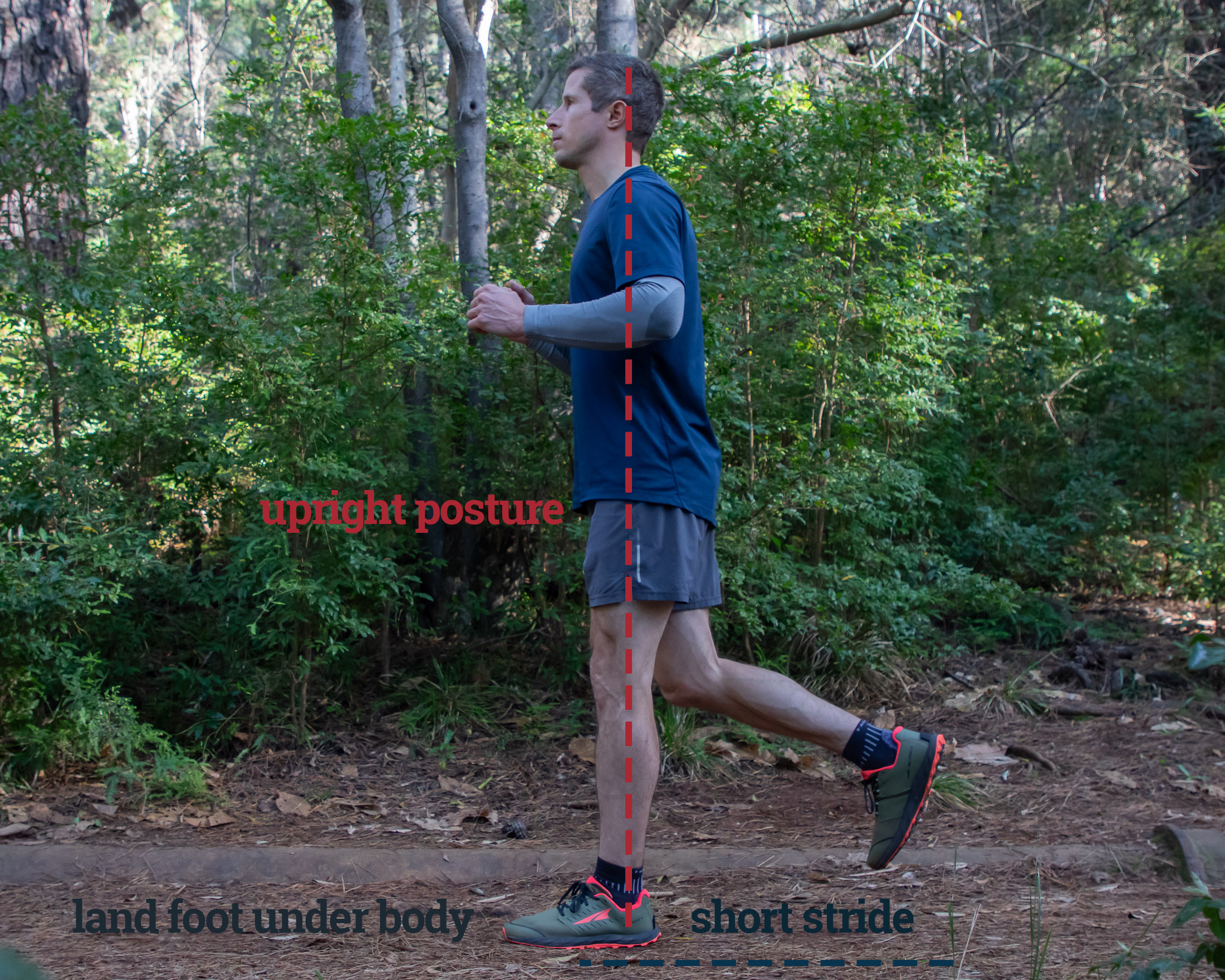
Besides encouraging a less jarring foot strike, shorter strides will also allow you to vary the length of a single stride when you need to clear awkwardly positioned obstacles. If you need to get over a root, you can stretch out your next stride – something you wouldn’t be able to do if you were already using long strides. Lastly, shorter strides keep your feet under you and inline with your center of gravity, and they shorten the gaps in time and distance when your feet aren’t on the ground – better for control.
High Cadence
Obviously, if you shorten your stride, you have to increase your turnover or cadence to maintain the same pace. Most competitive runners aim for around 180 strides per minute, but there is actually no best pace – much will depend on your level of fitness. It’s generally agreed that if your cadence is over 170, there’s no cause for concern, but if it’s under 170, you should try to speed things up. If you’re used to taking long strides with a slower turnover, getting comfortable with a faster cadence will take time and practice.
One way to measure your cadence is to count how many times your right leg hits the ground in 30 seconds and then multiply that number by four. Alternatively, you can track your cadence on Strava if you have an enabled device. Most GPS sports watches will define cadence as steps per minute (SPM).
How important is a midfoot strike?
Many coaches and runners believe that a midfoot strike is the best way to plant your foot, but the reality is that trail running requires you to use all three types of footstrike: forefoot strike, midfoot strike, and heel strike. And that’s okay. With varying terrain to contend with, it’s only natural for you to adjust your footstrike according to the gradient, height and distance of your next step. Even if you do favour a heel strike, as many runners do, there’s nothing wrong with that as long as you’re injury-free and you’re not making a habit of high-impact heel strikes. Again, if you’re keeping your stride short – not overstriding – you’re likely to avoid this problem.
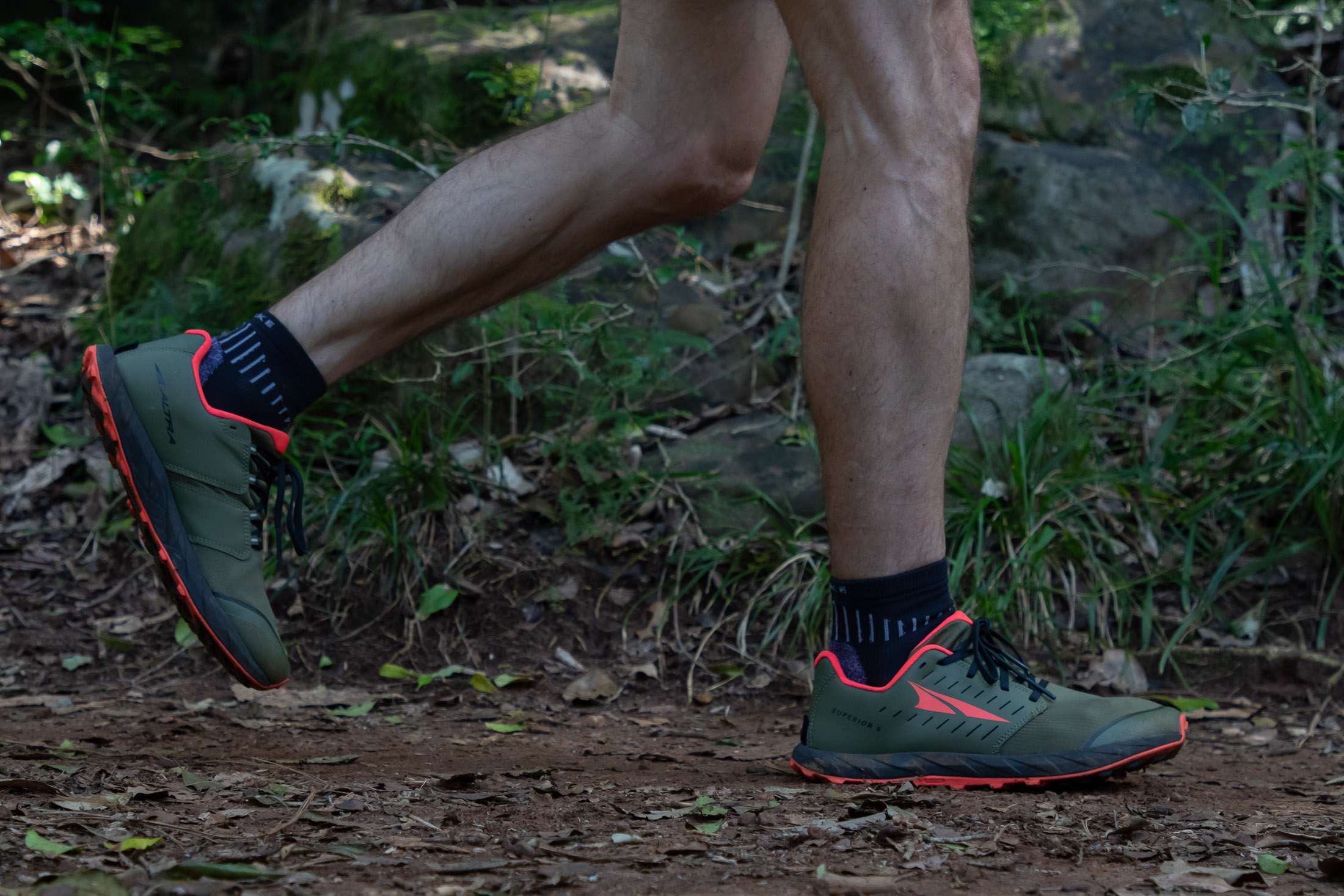
But now what about the claim that a midfoot strike is better than a heel strike or forefoot strike? Studies have shown that midfoot strikers are less likely to suffer from repetitive stress injuries, and it’s also true that elite runners are less likely to favour a heel strike, which suggests that a midfoot strike is more efficient. But changing your foot strike is no small thing, and you’ll need to carefully weigh up the pros and cons before deciding to change your foot strike. There’s no need to fix what isn’t broken, and if your heel-strike works for you, there’s an argument for sticking with it. If you do decide to change up your foot strike, you should also consider swapping to zero-drop shoes.
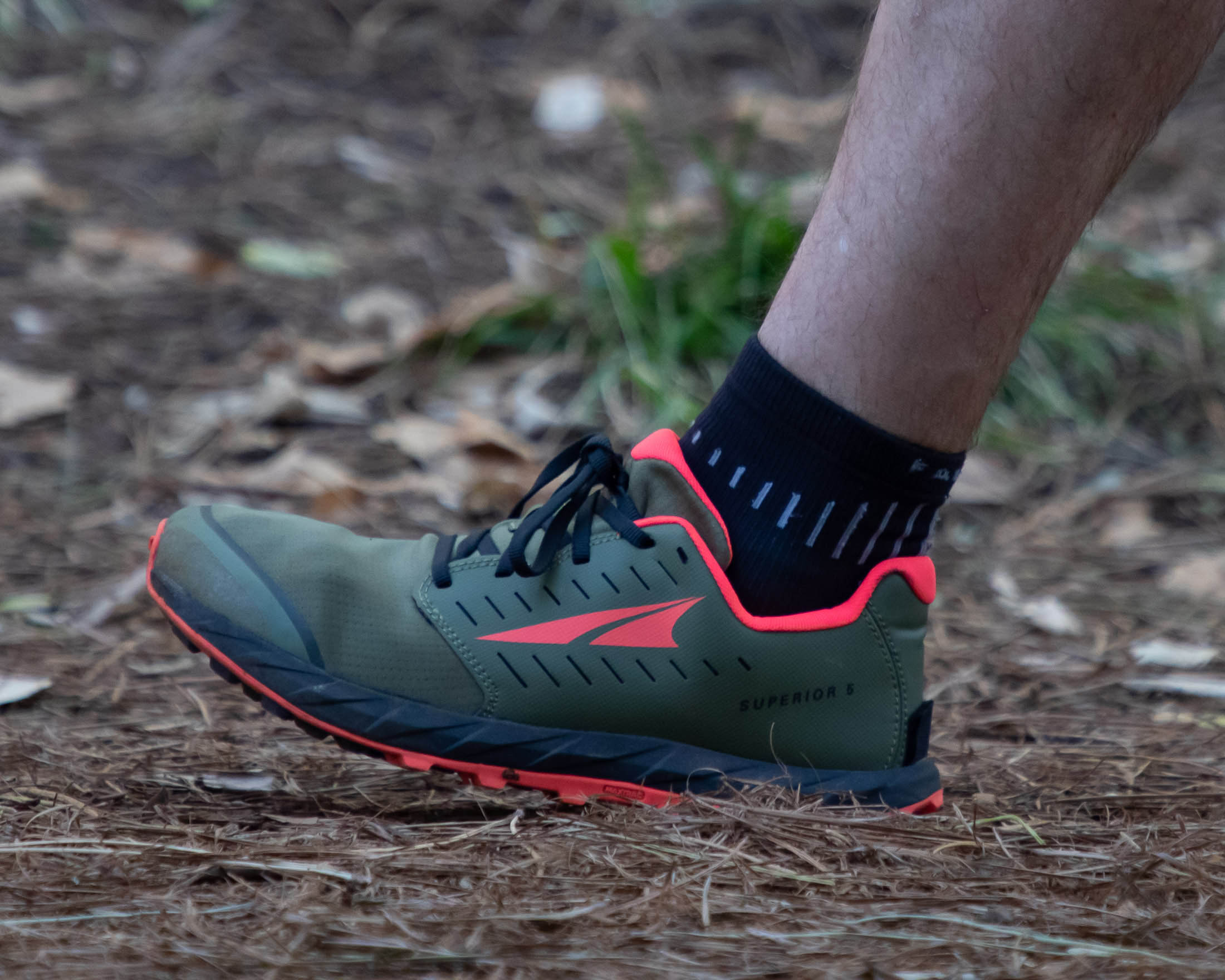
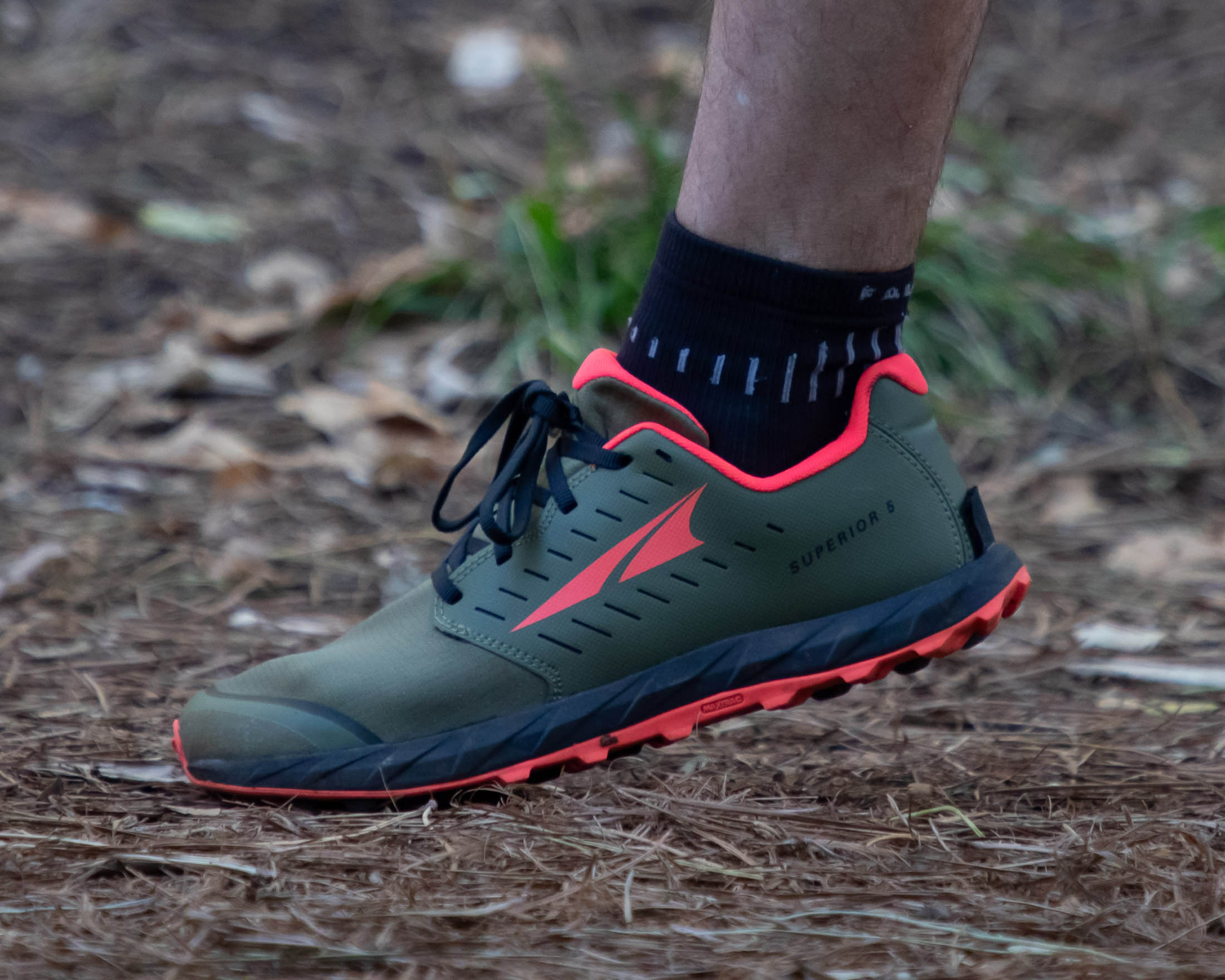
What is the rest of my body doing?
If you run with a short stride, high cadence, and good posture, you’re 90% there. Still, there are few other things you can do to maintain forward momentum and improve efficiency.
Look ahead
There are two reasons you should look ahead when running. The first is pretty obvious: you need to see what’s coming especially when negotiating techy sections of trail. This applies to all but the most sketchy bits of trail. In most other scenarios, you will instinctively place your feet securely even if the few feet in front of you are in your peripheral vision. The second reason you should keep your head up is that looking down closes your chest and puts strain on your neck and shoulder muscles, which, if it becomes a habit, can lead to tension.
Use your arms for balance and momentum
Your arm swing should counter the movement of your hips and help you maintain your balance. To do this as efficiently as possible, keep your arms close to your body – much like a T Rex – and at an angle of 90 degrees or less through the entire arm swing. On more technical terrain you might put out a hand for balance, but the rest of the time you should maintain a right angle or less in your arms. By controlling your balance this way, you’ll find it easier to change direction or alter the length of your stride when you need to.
Relax between strides
Tension makes every step harder, robs you of energy, and forces you into a hike that much sooner. The key to running efficiently is relaxing between strides. First, focus on relaxing your leg muscles whenever your foot is not in active contact with the ground. The cycle of contract-relax-contract-relax will give your muscles brief breathers and delay fatigue, which will allow you to push on for longer. Second, focus on letting your shoulders, lower back and arms relax. Even a slight forward lean on uphills can prompt your lower back muscles to tense and pull you upright.
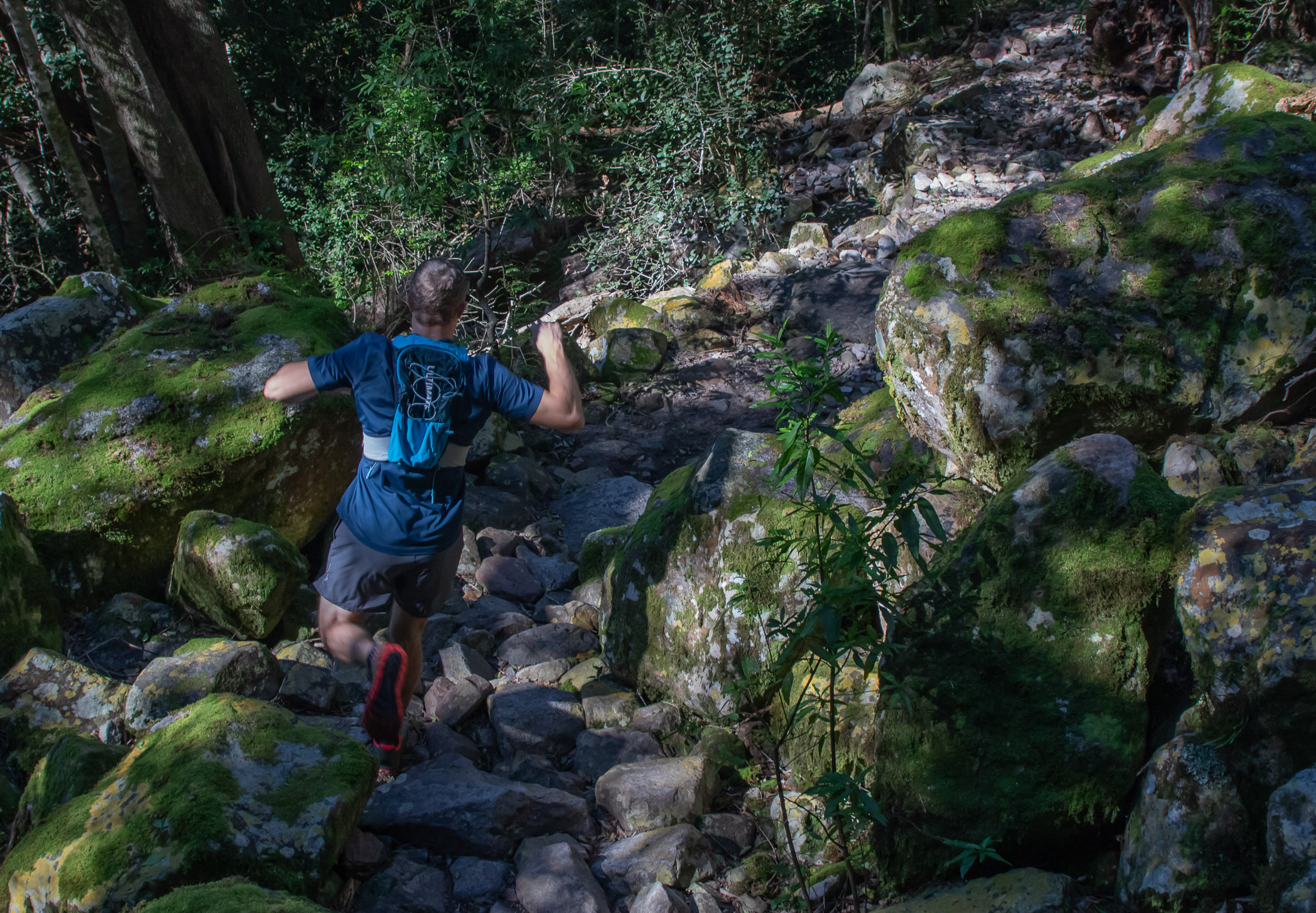
Uphill technique
Uphills are hard for everyone, but with proper technique and conditioning, you will get faster at uphill sections and even start to enjoy them.
Lean forward
Leaning forward will help you make the most of your momentum. But how far forward? Some say you should aim to mirror the gradient beneath your feet, but you will automatically do that just to stay upright. You actually have to lean even further forward – by about three or four degrees. When leaning this heavily, you will rely on your legs to maintain upward movement and oppose gravity, essentially stopping you from falling on your face. This technique takes practice, but its first step to making uphills easier.
Shorten your strides even more
Bounding uphill just isn’t sustainable. Big steps will overload your quads and flush your legs in lactic acid. To climb steep hills as efficiently as possible, keep your strides short and quick. If the trail is so steep that you can’t get your heel down (steep forestry roads will do this), your calf muscles will also get worked hard. When you can, make the most of less angled surfaced that allow you to bring your heel down completely (improving your ankle dorsiflexion will also help).
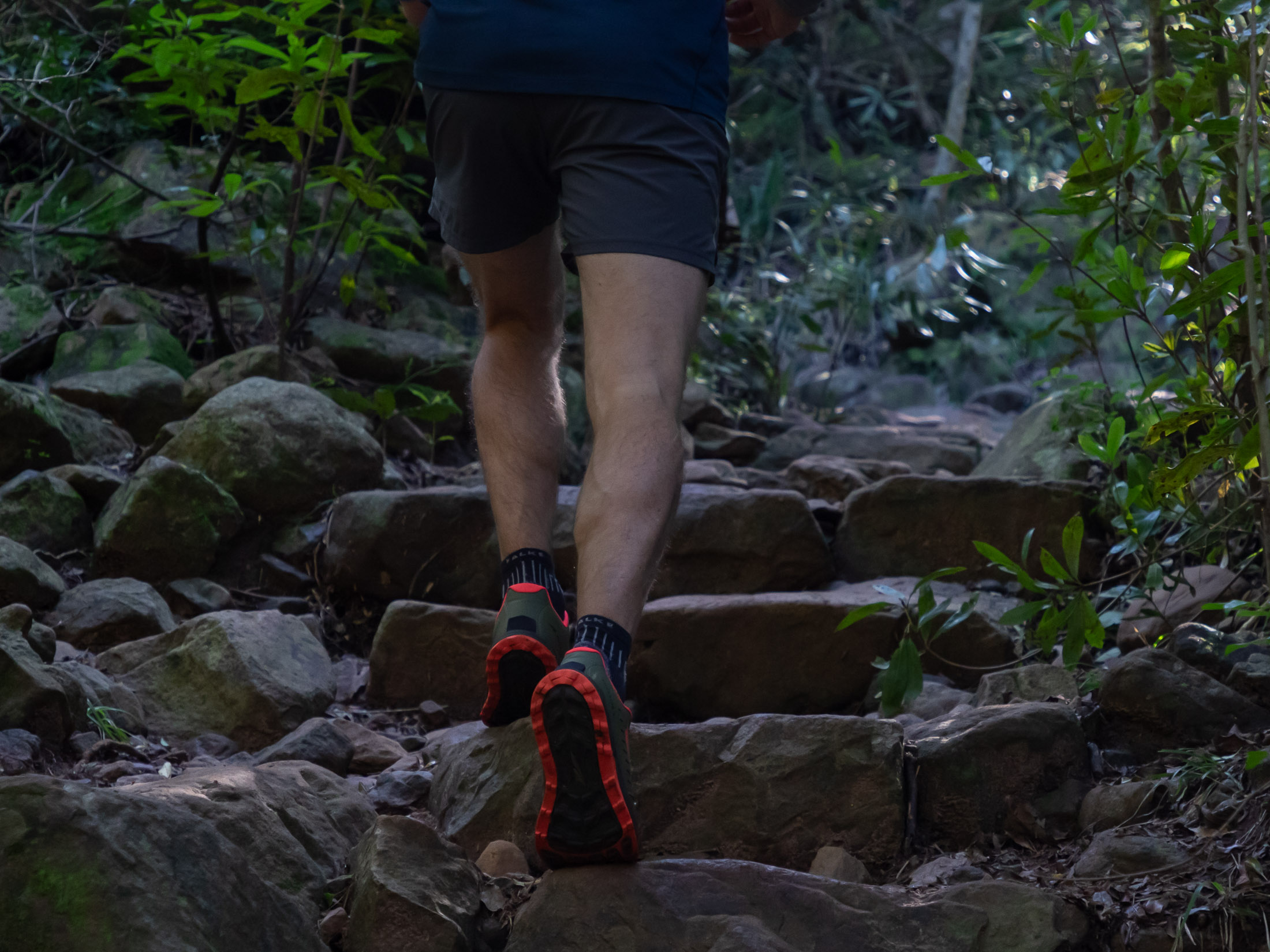
Relax between strides
In uphill running, tension makes every step harder, robs you of energy, and forces you into a hike that much sooner. But relaxing can be as simple as this two-step process. First, focus on relaxing your leg muscles whenever your foot is not in active contact with the ground. The cycle of contract-relax-contract-relax will give your muscles brief breathers and delay fatigue, which will allow you to push on for longer. Second, while leaning forward, concentrate on letting your shoulders, lower back and arms relax. Even a slight forward lean on uphills can prompt your lower back muscles to tense and pull you upright.
Power hike strategically
Everyone hikes when the terrain gets steep enough. That said, how you hike can make a big difference to how fast and efficient you are on uphills. As with running uphill, you need to lean forward, and this time it’s even more important because you’re going to put your hands on your quads and push down on them to give you extra lift. Next, learn to alternate between running and fast hiking for maximum efficiency. This will take some practice, and you’ll have to experiment with different intervals on various gradients. You might want to start with 10 seconds running and 50 seconds hiking, and take it from there.
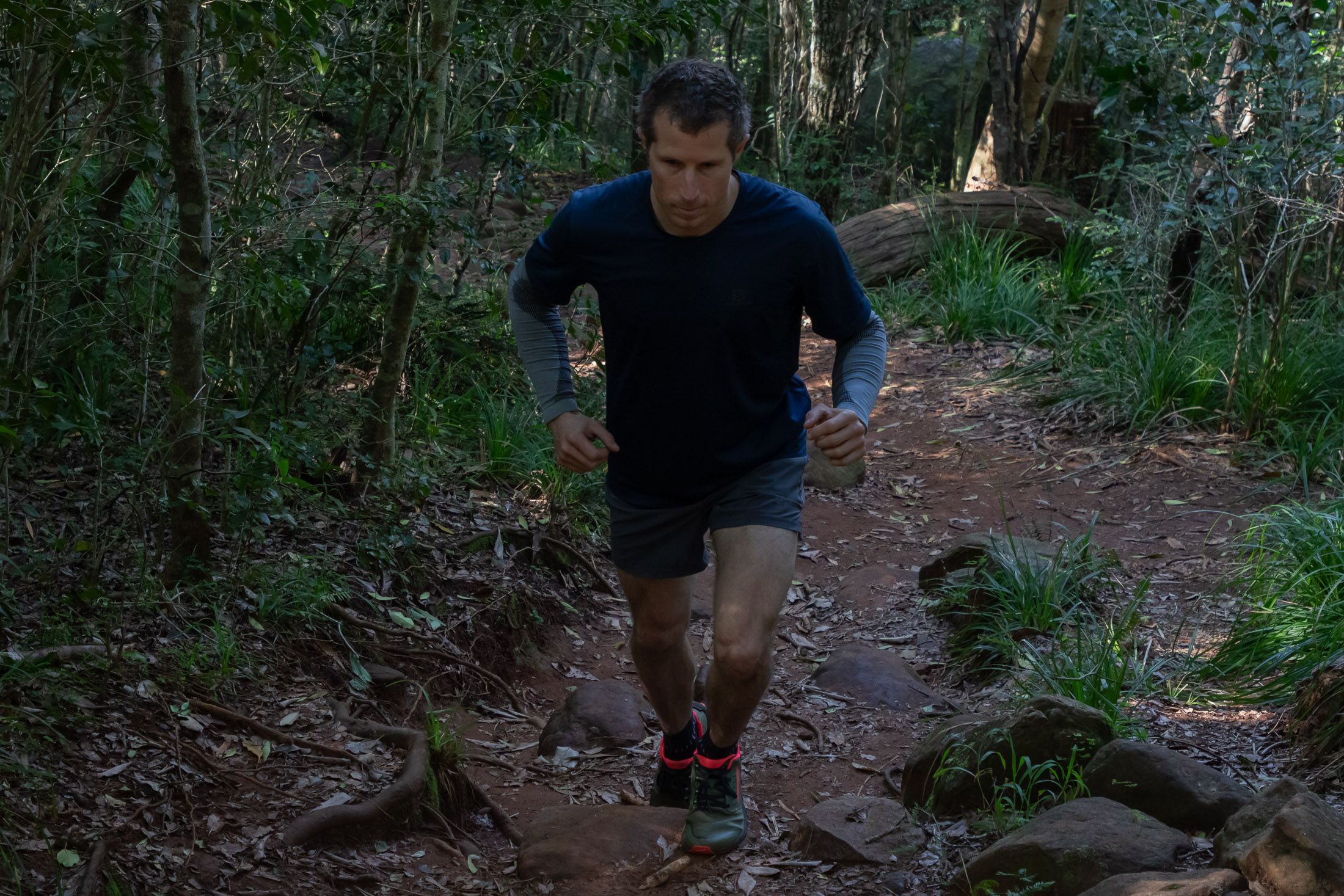
Downhill technique
On non-technical downhill sections, you can run with a slightly longer stride. This will increase the rate you heel strike, and so you should try to land as flat-footed as possible to soften the impact. Technical downhills require a different approach – one that can be summed up in the following three points.
Short but high-cadence stride
Overstriding can result in you landing with too much force and losing traction with your leading foot out in front of you – hard to recover from. Short, light steps reduce the impact force and make it less likely that you will lose grip. Your feet will also spend more time in contact with the ground, which will help you stay in control. To further reduce the risk of tripping, it helps to raise your knees between steps rather than kicking back. The resulting up-down motion is a little less efficient than a regular stride, but then again it will help prevent you from landing on your face

Hop, skip and jump
Sometimes the most direct route between A and B is to simply go over everything in between. Using a hop, skip or jump to clear rocky sections can help you maintain momentum and save energy, but this technique is more advanced and demands a greater degree of surefootedness. When you come across something you might want to clear, you need to look even further down the trail. Besides looking for a place to land, you need to identify sections of trail where you can slow down. First experiment with jumping over single obstacles and then try clearing multiple obstacles with patches of flat ground for landing and launching in between.
Stay upright
When running downhill, it might feel natural to lean back, but that will only cause you to heel strike. A backwards lean also puts less shoe in contact with the ground at the point of impact, making it more likely that you’ll lose grip and land on your backside. Aim to stay upright and position your body over your toes as much as possible.
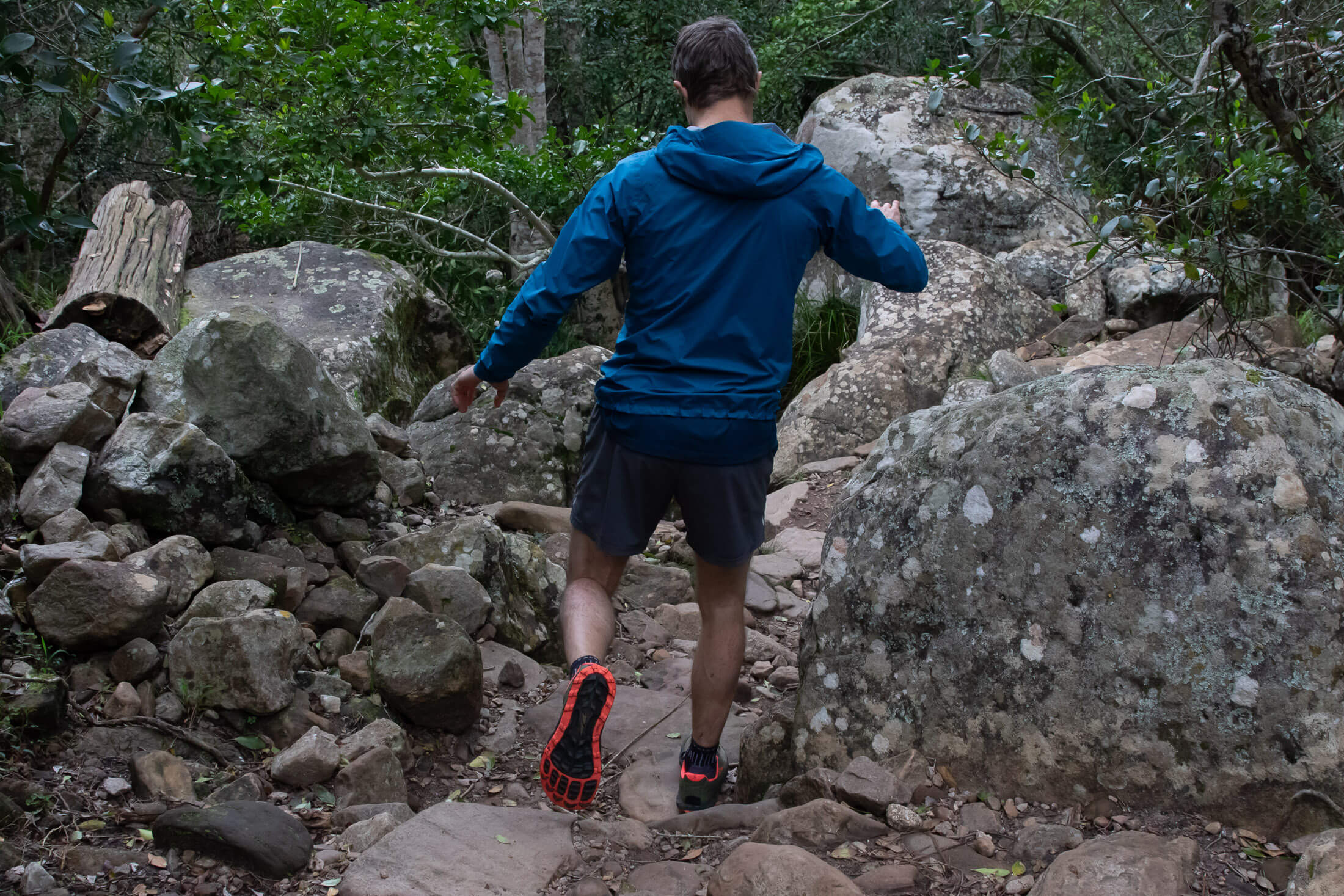
Running with poles
Trekking poles can offer a significant advantage on uphills and can be worth carrying if you’re going to face sustained uphill slogs. Besides allowing you to use your arms to generate upward movement – taking some of the load off your legs – poles give you something other than your knees to lean on when you’re absolutely gassed. This helps to keep you upright and your chest open when you need the air most. To make the most of poles, you will initially need to spend a significant amount of time hiking with them just to build up strength in your arms, shoulders, and back (assuming you’re not a gymnast). See my article on when to use trekking poles for all the pros and cons as well as tips on how to use them.
Get out there
The best way to develop your trail running technique is to get out there and get some on-trail experience. That said, if it’s further instruction you’re after, this site has many more trail running articles filled with pointers, practical tips, and valuable insights. Happy exploring.
